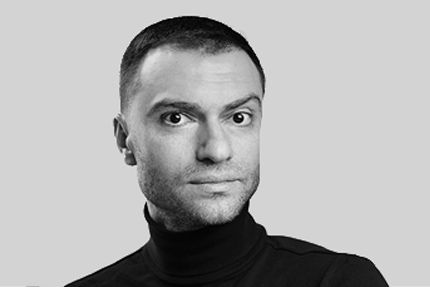
Dance Open 2019:
Nutcracker, choreography Alexey Miroshnichenko,
performed by The Perm Opera and Ballet Theatre
Alexey Miroshnichenko: «Nutcracker has followed me all my life»
«I completely forgot and suddenly — when the ballet was almost staged — remembered…It was the spring of 1999. I studied at the ballet department of the Vaganova Academy of Russian Ballet and I went to see the professor Igor Belsky. He was sitting at the table; there were a huge folder and a book about «Nutcracker». We had a small talk. When I was about to leave, Igor gave me the folder — there were all his notes — and the book. «The core work — is Nutcracker, — he told pointedly and added — You should stage the fairytale about the Princess Pirlipat». It was our last meeting. Belsky died after several months.
«Nutcracker has followed me all my life. When I was child — it followed me as a literary fairytale. When I was 9 and I entered the dance school — as an annual New Year’s spectacle. I passed through almost all parties of this ballet: the Christmas party, mice, buffoon, arab, Spanish dance, «quaternary», I played even the Mouse King. The Nutcracker became the part of me. And it’s clear that while I was setting my mind on a new spectacle, I kept in mind everything composed by Vasily Vainon.
Vainon has created a wonderful production — you shouldn’t think that we produce a new ballet because the old one is bad. The time calls for something more complicated, with many layers of perception, and something more choreographically saturated. Now the Perm ballet company exists in such form when a simple children’s spectacle is not very interesting for it.
I make no secret that I always wanted to tell this story in my way. Tchaikovsky composed the ballet on the request of Vsevolozhsky and for the libretto of Petipa, in other words he composed it as music for dance, as service music. But indeed, he composed a multidimensional symphonic suite — programmatic on paper, but, in reality, going far beyond the simple script. And I would like to find its appropriate embodiment in dance.
We have created a fantastic and philosophic work where reign Tchaikovsky and Hoffmann, sparkle Petipa and Lev Ivanov and occasionally appears Vainon. It was important for me to pay respect to Vasily Ivanovich in my way, and in the text I even hid some, not the citations from the previous production, but some plastic similarities, allusions, chorographical feelings close to the music.
As for me, The Nutcracker is first of all a fairytale about growing up. And I like the definition given by Asafyev — «the symphony about the turn of childhood»: «When the dreams move the thoughts and feelings forward, to the unconscious — to the life which is only anticipated». In this case, the role of toy, as the first «simulator», is very important for a child. He animates the toy and thus he learns to communicate with people. The children often break toys, but they do it from the desire to understand how they are made. And to prevent that from happening with real people, you should allow the children to experiment.
In our production Marie is just practicing. She makes an irrevocable mistake — but only in dreams. Having the bitter experience, she begins to act differently in reality. And she grows up. Why waking up, she doesn’t find her toy Nutcracker in the armchair? Maybe because she doesn’t need a toy anymore, she needs a friend.
You shouldn’t look far to imagine what city is ideal for this story. Certainly, it’s Saint-Petersburg. The city where Hoffmann’s mysticism and the reality complement each other. The city where Tchaikovsky, Petipa and Ivanov meet. The city where Vainon was born and where I have studied and grown up.
It's hard to know for sure, what Belsky meant when he told me: «The core work — is Nutcracker». Probably, he was talking about himself. But who knows, whether it was a message for me or not. In any case, the one thing that makes me feel better — that the fate allowed me to produce this spectacle and I gratefully consecrate it to Igor Dmitrievich! »
Festival Team: This email address is being protected from spambots. You need JavaScript enabled to view it.
Tickets: This email address is being protected from spambots. You need JavaScript enabled to view it.
Accreditaion and Cooperation: This email address is being protected from spambots. You need JavaScript enabled to view it.
